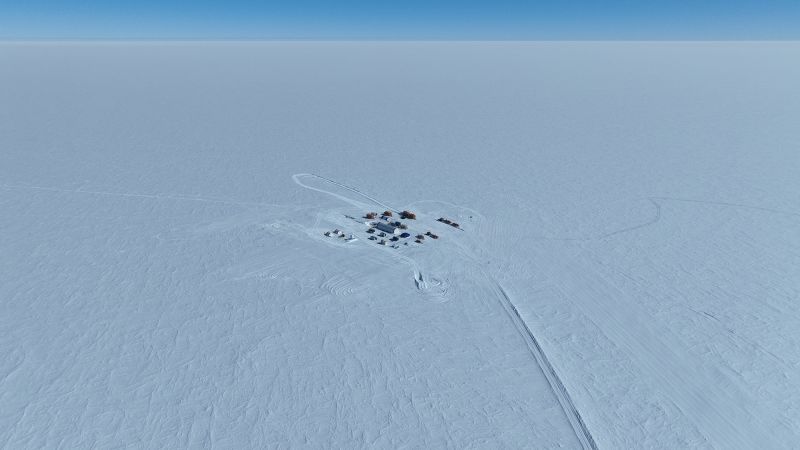Exploring the Earth’s past is akin to piecing together a vast puzzle, and one of the most valuable tools in this endeavor lies buried beneath the frigid layers of the polar ice caps—ice cores. These frozen archives serve as time capsules, preserving tiny air bubbles from thousands of years ago. By examining these encapsulated gases, researchers can reconstruct historical climate and environmental conditions, which allows them to ascertain how dramatically our planet has changed over time. Ice cores not only provide a glimpse into fluctuating temperatures of yesteryears but also offer predictions on rising sea levels in the face of ongoing global warming driven by greenhouse gas emissions.
The significance of ice core samples expands with depth; the more profound the core drilling goes, the more historical data it contains. Recent epic explorations have led to the extraction of some of the planet’s oldest ice samples. A dedicated research team comprising experts from twelve European scientific institutions successfully drilled a staggering 9,186 feet (approximately 2,800 meters) deep into the Antarctic ice sheet, reaching the bedrock below. This monumental sample encapsulates around 1.2 million years of Earth’s climatic epochs, potentially illuminating mysteries regarding ice ages that commenced about a million years ago. These shifts may have resulted in steep declines in ancient human populations, perhaps due to changing environmental conditions.
Transitioning to different matters of nature, the spotlight falls on a remarkable orca named Tahlequah, who gained international attention in 2018 for her emotional display of grief when she carried her deceased calf over 1,000 miles for 17 days. Sadly, she now faces a second heart-wrenching loss. A new calf spotted in Puget Sound on December 20 has been confirmed dead just days later, prompting Tahlequah to again carry her lost offspring. Scientists now observe her grieving process closely, recognizing not only the emotional stress it imparts but also the potential physical toll on her, particularly given her part in an already vulnerable killer whale population.
Meanwhile, in a bid to reshape the commercial space industry, Blue Origin, the aerospace company founded by Jeff Bezos, is preparing for the inaugural launch of its New Glenn rocket from a Florida launchpad. Named after the celebrated NASA astronaut John Glenn, this uncrewed vehicle aims to challenge the existing dynamics in the space transport sector. The mission holds the promise of eventually supporting initiatives such as launching Amazon internet satellites or aiding in the construction of a space station that Blue Origin is collaborating on. A focal point of this launch will be the recovery of the first-stage rocket booster, as such successful rebounds are crucial for future sustainability in space exploration.
In the realm of astronomy, interesting developments concerning Pluto have caught the attention of scientists. This dwarf planet is notable for its relatively large moon, Charon, prompting researchers to investigate their shared orbital relationship. Recent studies suggest a hypothesis referred to as “kiss and capture,” indicating that approximately 4 billion years ago, Pluto and Charon experienced a particular kind of collision. Instead of melting into one amalgamated mass or bouncing off each other, they merged into a snowman-like shape before ultimately diverging into their current orbital paths. It is speculated that this unusual interaction could be responsible for the suspected existence of a subsurface ocean beneath Pluto’s icy crust.
Shifting focus to Earth’s ancient history, a significant discovery took place at Dewars Farm Quarry in Oxfordshire, England. Quarry worker Gary Johnson detected unusual ground anomalies that unveiled a trove of nearly 200 dinosaur footprints, constituting the largest known dinosaur track site within the United Kingdom. The trackways suggest a movement pattern of diverse species, including long-necked dinosaurs like Cetiosaurus and formidable three-toed predators such as Megalosaurus. Professor Kirsty Edgar from the University of Birmingham spoke to the find’s value, likening it to a “snapshot” of dinosaur activity millions of years ago.
In other explorations of the natural world, remarkable advancements and phenomena abound. For instance, golden lion tamarins, once teetering on the brink of extinction, are rebounding thanks to dedicated conservation efforts in eastern Brazil. NASA’s ongoing endeavors to retrieve samples from Mars will soon reach a deciding point, as crucial decisions on methodologies will unfold by 2026. Lastly, in a groundbreaking initiative, a Kenyan company is transforming the world’s most prevalent invasive species, the water hyacinth—known for clogging waterways—into bioplastic, offering a novel solution to ecological concerns while promoting reforestation activities.
In summary, scientific exploration continues to unveil secrets from our planet’s and solar system’s past, highlighting the importance of diligent research in both earth sciences and astrophysics, while also bringing attention to the emotional narratives within the animal kingdom.



